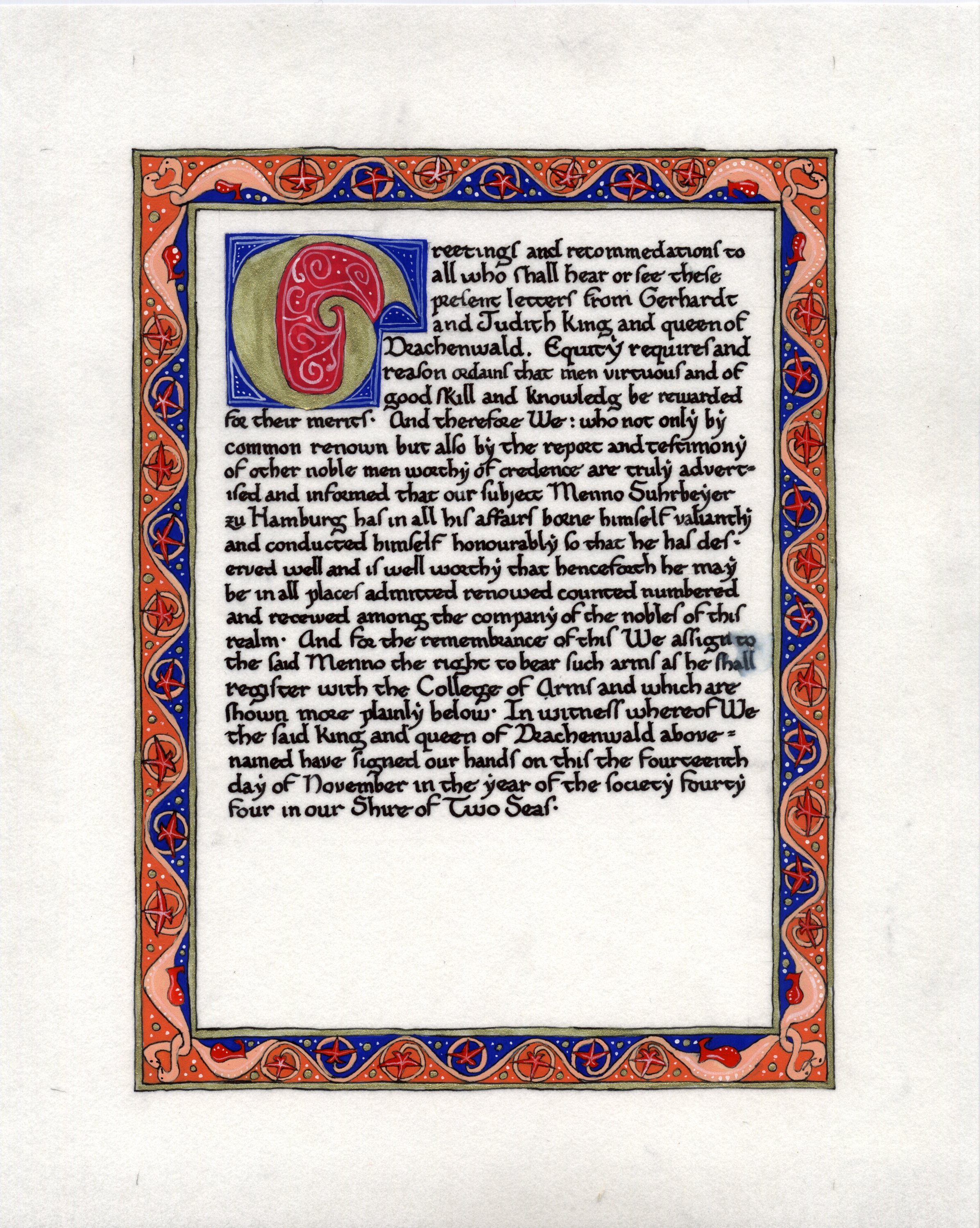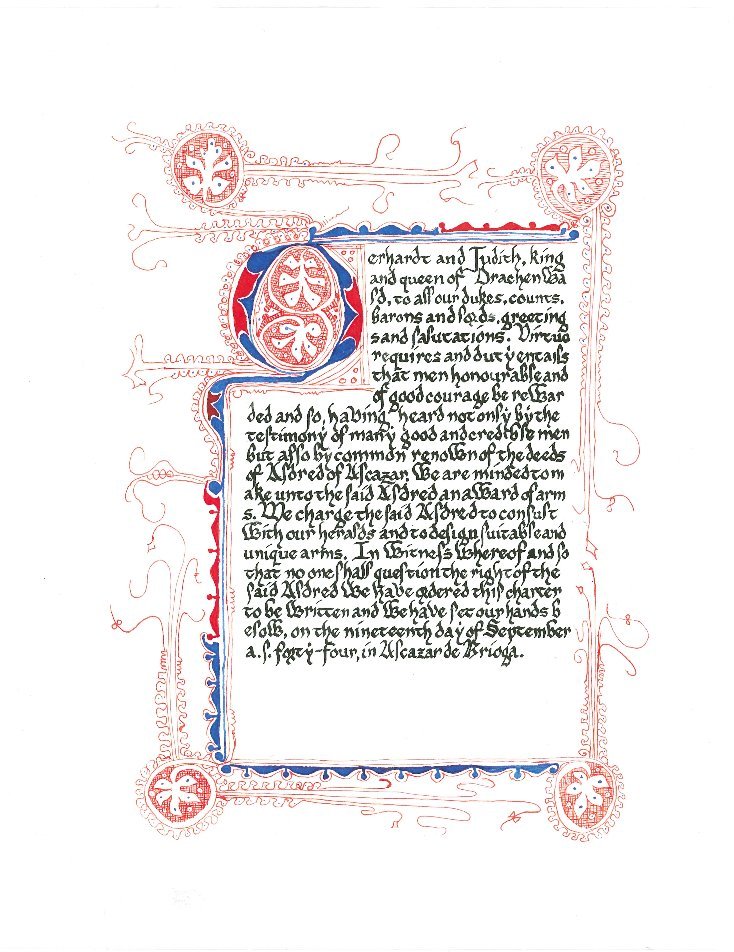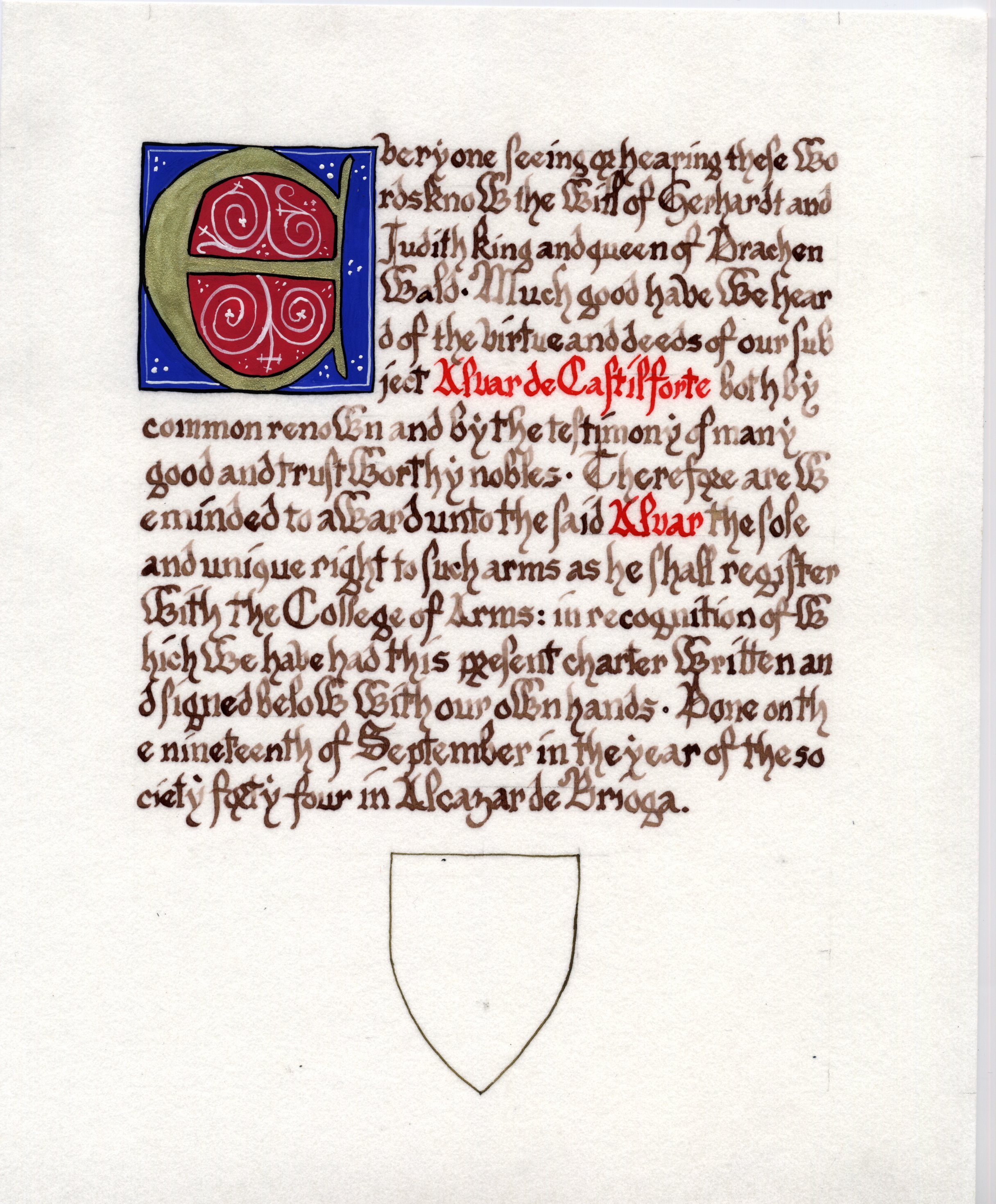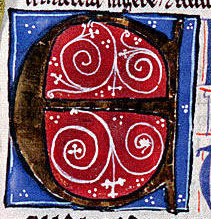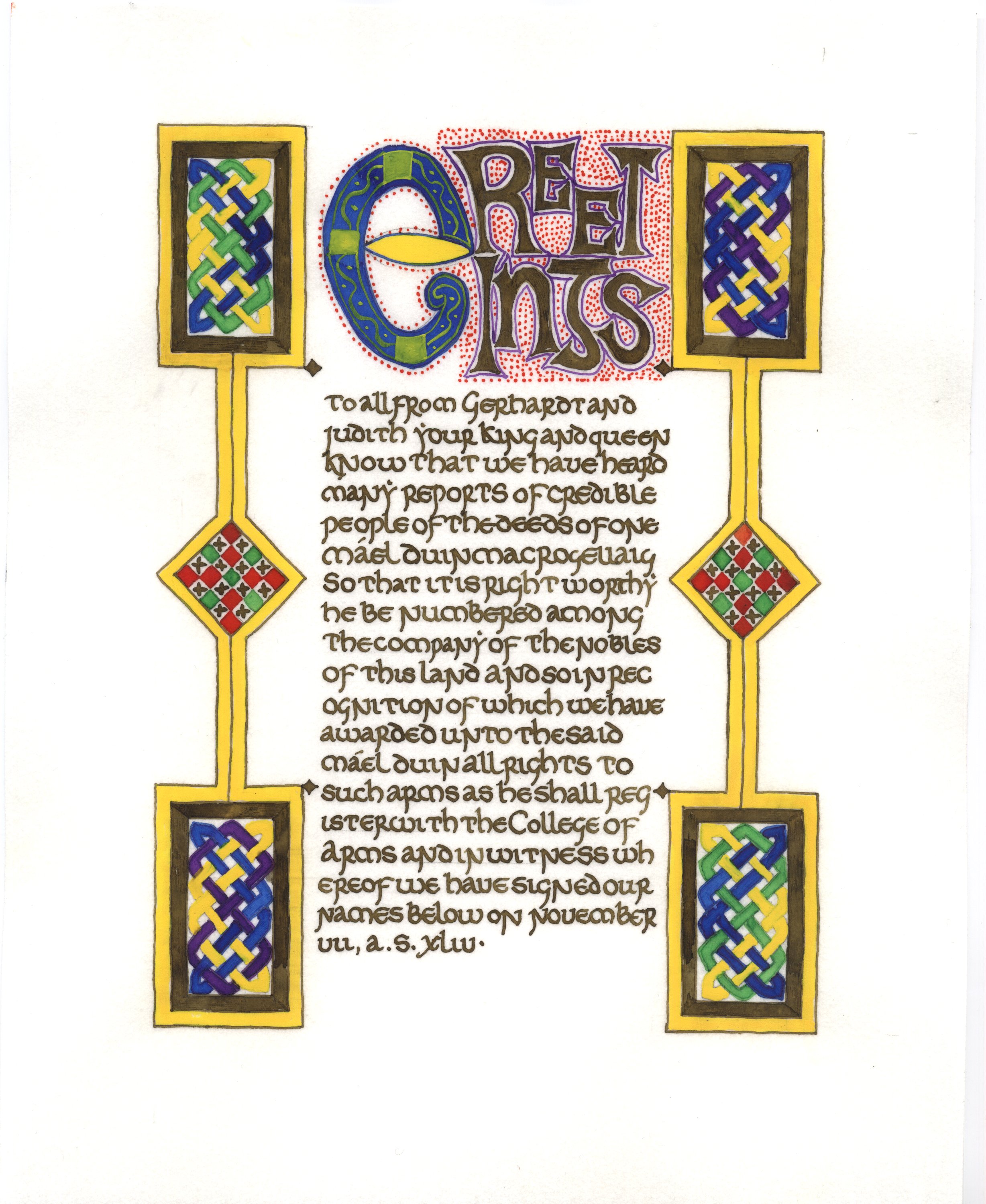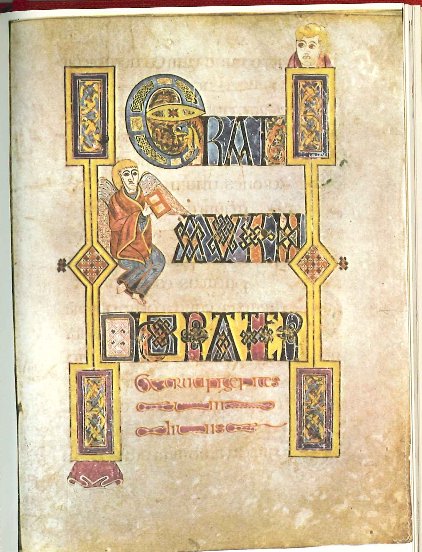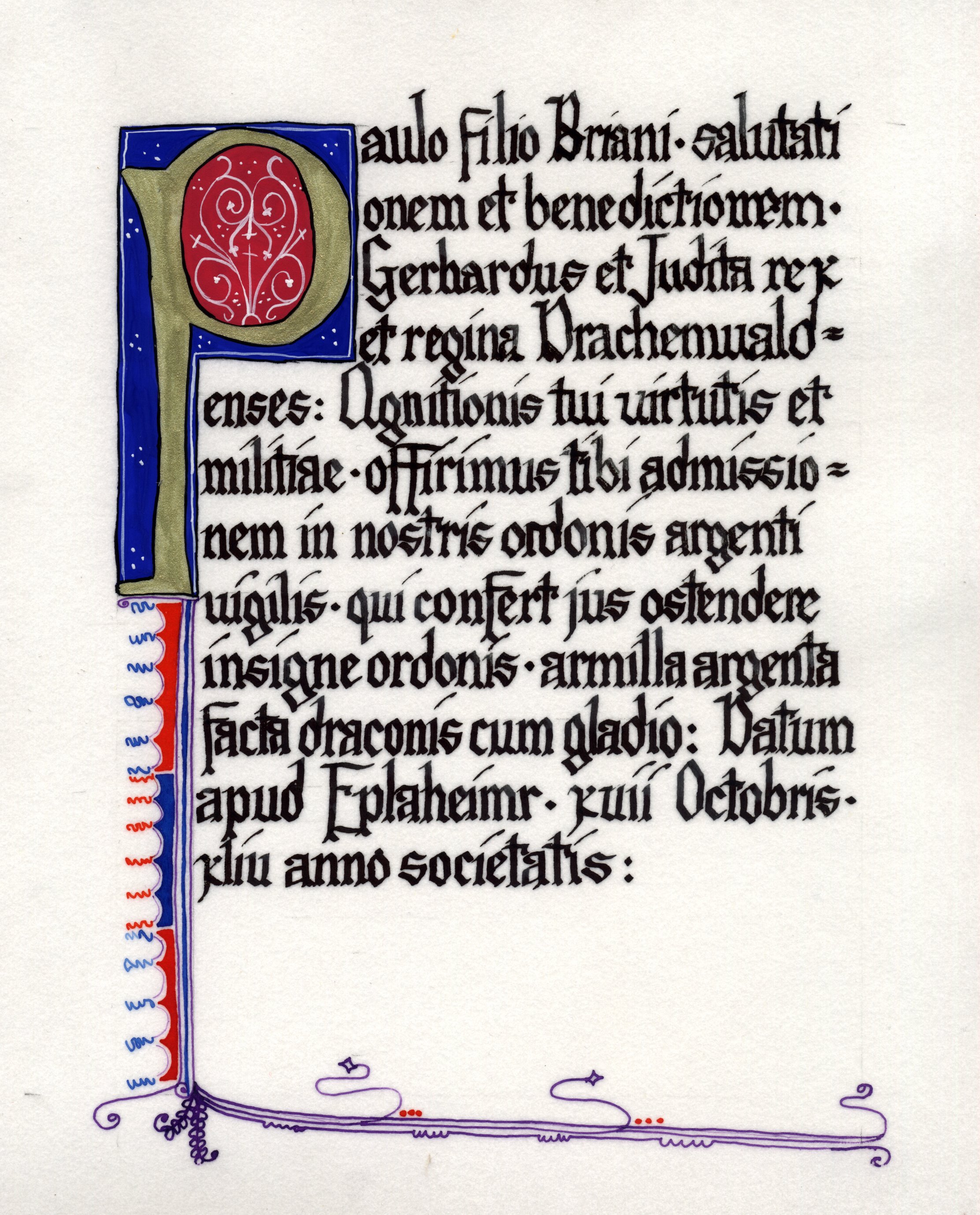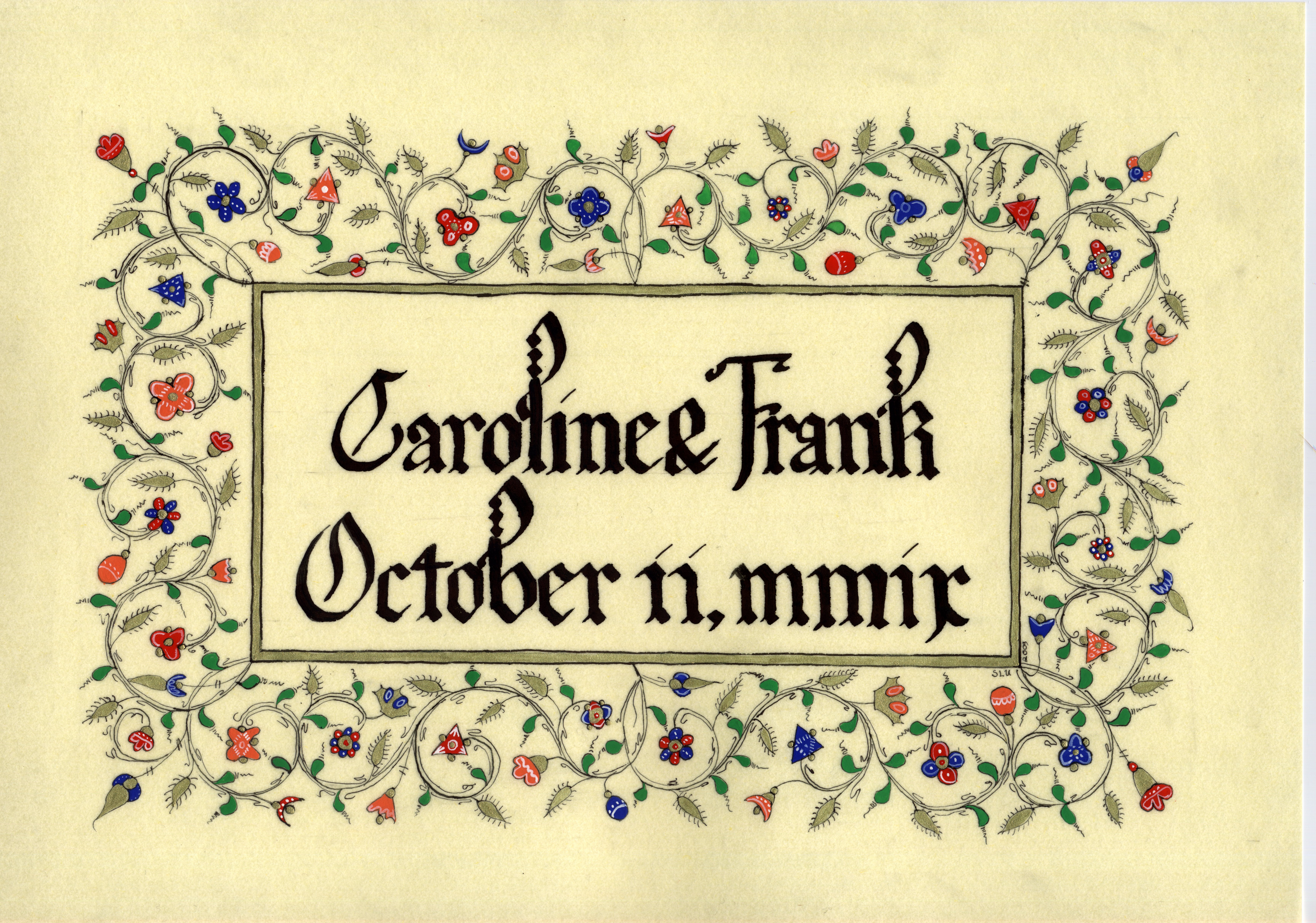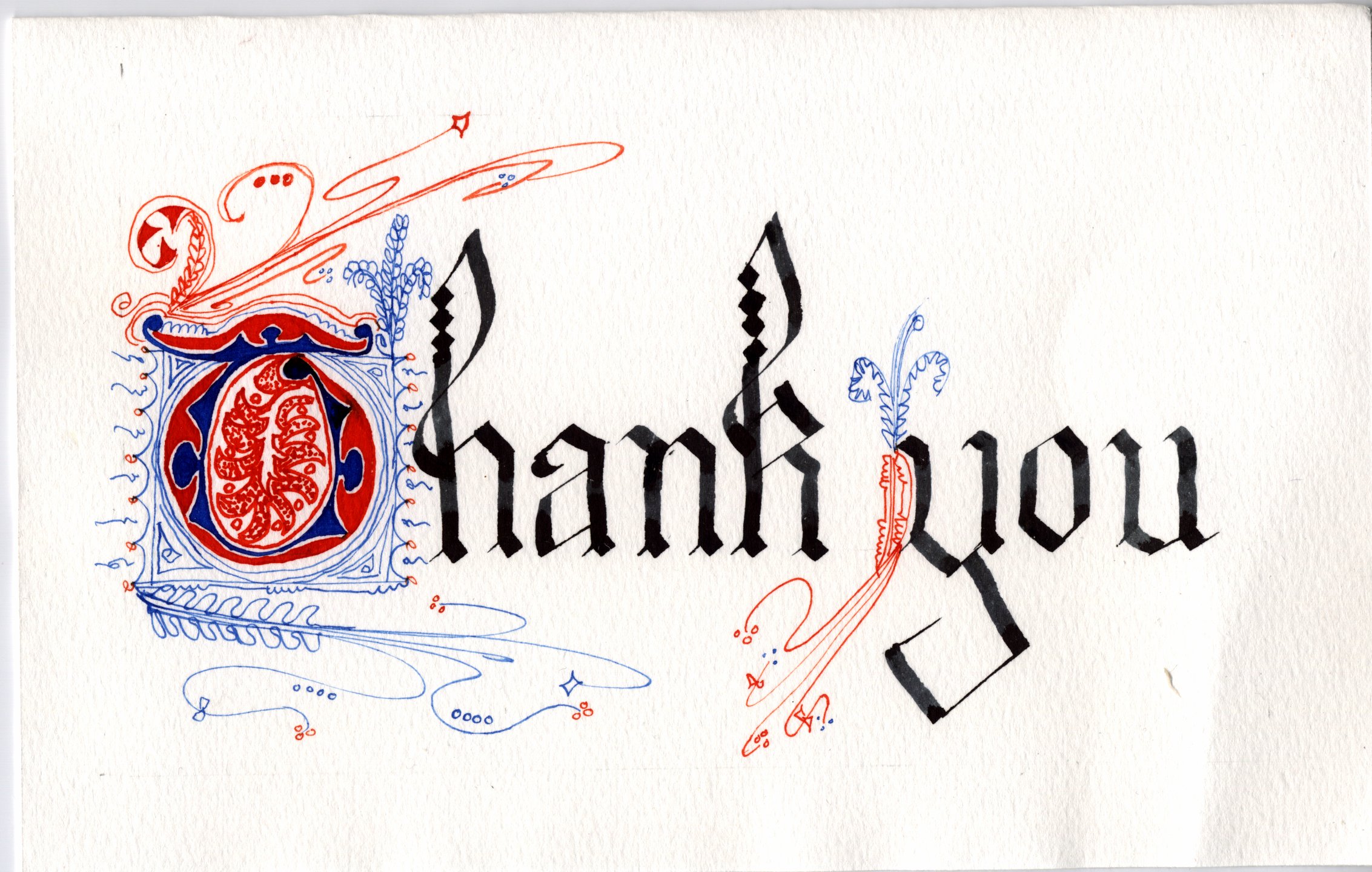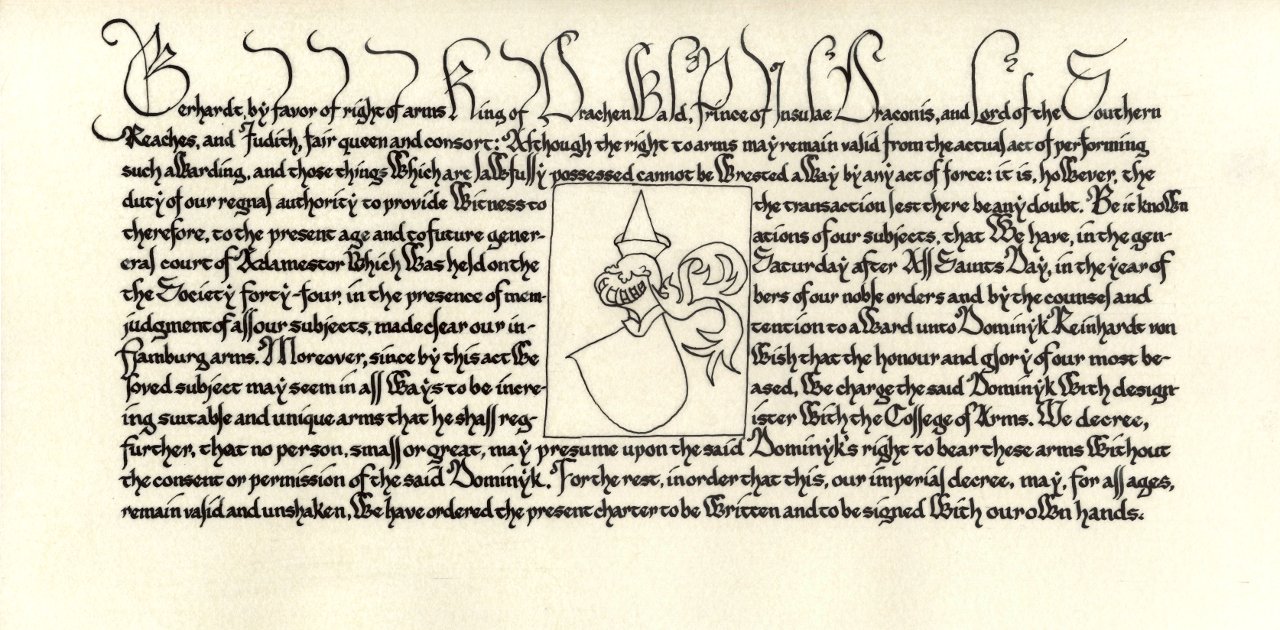
Grants of arms (or diplomas of nobility) in German contexts date from the mid 14th-century. According to John M. Jeep, Medieval Germany: An Encyclopedia, the earliest German grant of arms was given by Ludwig of Bavaria in 1338. Unfortunately, I haven't been able to find any further information about this grant.
The design is based on this image:

which according to http://en.wikipedia.org/wiki/Wikipedia:WikiProject_Heraldry_and_vexillology/Tasks is a grant of nobility to Seyfrieda von Rotha in 1464, from the chancellery/chancery of czar/emperor(?) Frederick III (possibly the Holy Roman Emperor Frederick III). Though from a Polish context, the text appears to be written in German. Unfortunately, again I couldn't find any further info on the contents of the text.
I tried to find any source that gave a text, either in the original Latin or German or in translation into English, of a medieval German grant of arms or diploma of nobility, and failed. The text I used is based on a translation of the charter establishing the Duchy of Austria, Sept. 17, 1156, modified to be appropriate to granting arms to an individual, rather than the creation of a duchy. The text reads:
Gerhardt, by favor of right of arms King of Drachenwald, Prince of Insulae Draconis, and Lord of the Southern Reaches, and Judith, fair queen and consort: Although the right to arms may remain valid from the actual act of performing such awarding, and those things which are lawfully possessed cannot be wrested away by any act of force: it is, however, the duty of our regnal authority to provide witness to the transaction lest there be any doubt. Be it known therefore, to the present age and to future generations of our subjects, that we have, in the general court of Adamestor which was held on the Saturday after All Saints Day, in the year of the Society four-four, in the presence of members of our noble orders and by the counsel and judgment of all our subjects, made clear our intention to award unto Dominyk Reinhardt von Hamburg arms. Moroever, since by this act we wish that the honour and glory of our most beloved subject may seem in all ways to be increased, we charge the said Dominyk with designing suitable and unique arms that he shall register with the College of Arms. We decree, further, that no person, small or great, may presume upon the said Dominyk's right to bear these arms without the consent or permission of the said Dominyk. For the rest, in order that this, our imperial decree, may, for all ages, remain valid and unshaken, we have ordered the present charter to be written and to be signed with our own hands.
The silhouette for the coat of arms is based on the achievements found in the Bruderschaftsbuch des jülich-bergischen Hubertusordens, BSB Cod.icon. 318, dating to around 1500 (though the cute little hat comes from Anton Tirol's Wappenbuch, BSB-Hss Cod.icon. 310, dating to the end of the 15th C--1540.):
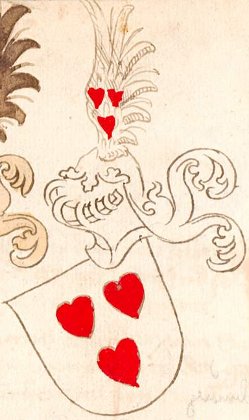
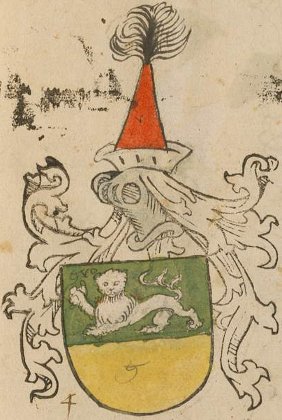
The scroll took two days to complete, Oct. 20, and 21.
© 2009, Sara L. Uckelman.
